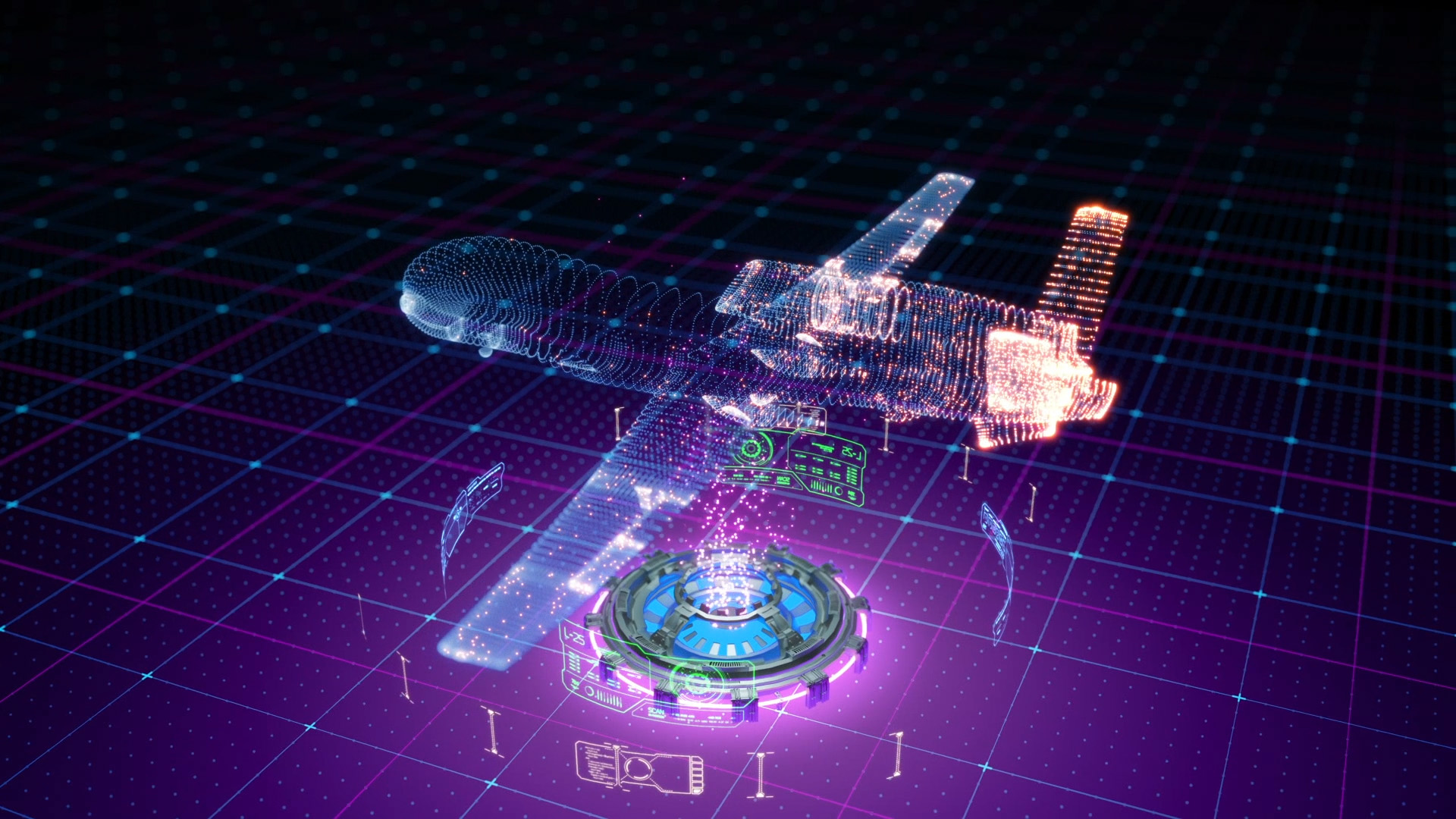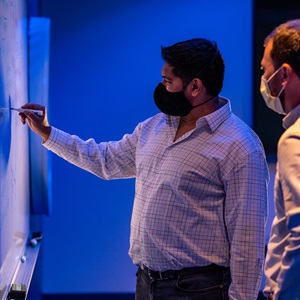Digital Twins Facilitate Program Success
The Next Evolutionary Step in Modeling and Simulation

By Scott Gourley
The use of digital twins is a critical element of digital transformation success. As a founding member of the Object Management Group’s Digital Twin Consortium, Northrop Grumman recognizes the importance of this push toward innovation and is working with government and industry partners to establish the foundations that will accelerate the delivery of these technology benefits to the Department of Defense.
"A digital twin is a virtual representation of a real-world entity that is regularly synchronized with its physical counterpart," explained Laura Szypulski, director of digital transformation strategy at Northrop Grumman. "It's seen by some as the next evolutionary step in modeling and simulation. And there are a large number of use cases, with people coming up with new uses all the time."
“The commercial world has been leading on this until now,” Szypulski added, “and we want to use the consortium to accelerate this digital transformation as quickly as possible for the aerospace and defense industry.”

Expanding Applications for Digital Twins
Szypulski offered examples ranging from testing and refining early system designs in a virtual environment to predicting degradation of fielded antenna systems against critical mission requirements.
"If you've got a synchronized digital twin, you can project forward and determine when you need to send somebody out in the field to replace something, like an antenna element, or run trades so you can take the least expensive or most effective path forward before you are affected by something," she said.
When asked about the desired frequency of synchronization between an actual system and its digital twin, she acknowledged the likelihood of different timelines, based on whether a system was commercial or military and its actual performance envelope.
"Ideally, you'd be synchronizing constantly, at least every few minutes," she observed. "But I think there are plenty of scenarios where you may not synchronize for days or weeks in the military."
Standardizing and Accelerating Technology
Noting that the concept emerged fairly recently, Szypulski pointed to initial recognition of the need to establish an industry consortium to help define and refine the new digital transformation concept. That consortium was created as part of the Object Management Group, a worldwide-recognized body responsible for a large number of software and system standards.
"Not everyone understood the concept at first," she said. "Clearly it was new, and some people were just throwing words out there without agreement on terms and definitions. So, the consortium took shape in early 2020 to start standardizing that terminology. And we are one of the founding members."
She added that the whole point of the consortium is to share ideas around digital twins, across all industries. This will help to accelerate the technology's development. For example, if we can create more standards for digital twins, it will be easier to use tools created with it across different platforms—regardless of what company developed them. This should help to speed up the process of bringing digital twins into wider use and expanding its potential applications.
"The commercial world has been leading on this until now," Szypulski added, "and we want to use the consortium to accelerate this digital transformation as quickly as possible for the aerospace and defense industry.”
As the full potential of the digital twin is realized, Szypulski would like to see a renewed conversation about what problems the technology can solve for the Department of Defense.
"Actually, that's another reason that we really want to be part of the consortium: to better educate people on what digital twin really means and what it can contribute to program success," she said.

Driving Innovation Forward
Looking ahead, near-term efforts have expanded to define specific use cases in the defense environment and the interfaces necessary to facilitate applications.
Recently, Northrop Grumman was awarded the LGM-35A Sentinel Ground Based Strategic Deterrent (GBSD) engineering and manufacturing development (EMD) to modernize the nation’s aging intercontinental ballistic missile system. For the first time, a program of this size, is delivering artifacts in a fully-digital environment.
“Leveraging innovation has been the hallmark of the Sentinel (GBSD) program since the outset,” said Greg Manuel, vice president and general manager for the Strategic Deterrence Systems division at Northrop Grumman. “Our Sentinel (GBSD) team is building a digital twin capability to continuously visualize, integrate, and test the system design. This allows us to identify and eliminate issues before creating the physical representation, while operating with speed and agility in meeting our program schedule.”
Digital twins transform business by enabling teams to make changes in real time and visually see the improvements. Northrop Grumman continues to embrace digital engineering to develop and deliver 21st century capabilities that will keep our nation and allies safe for decades to come.
More Innovation Stories
Read all stories about advanced technology and innovation >>


